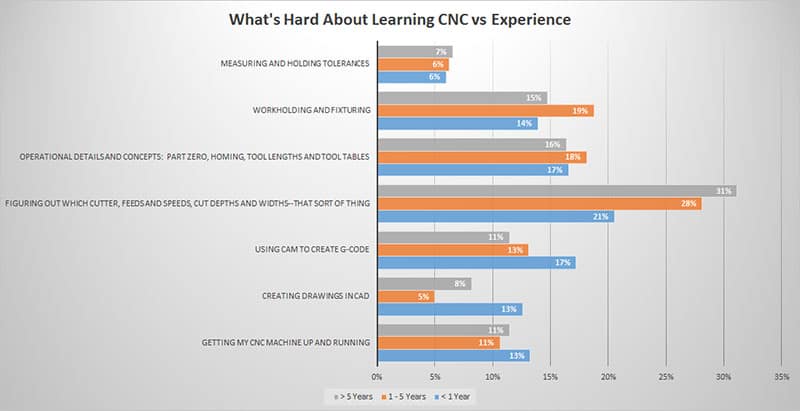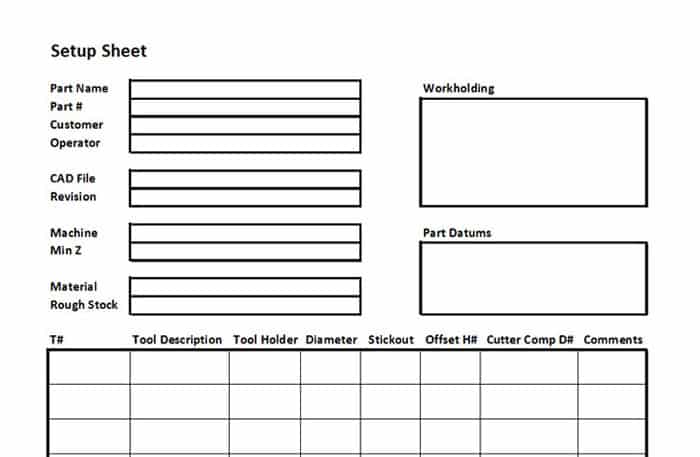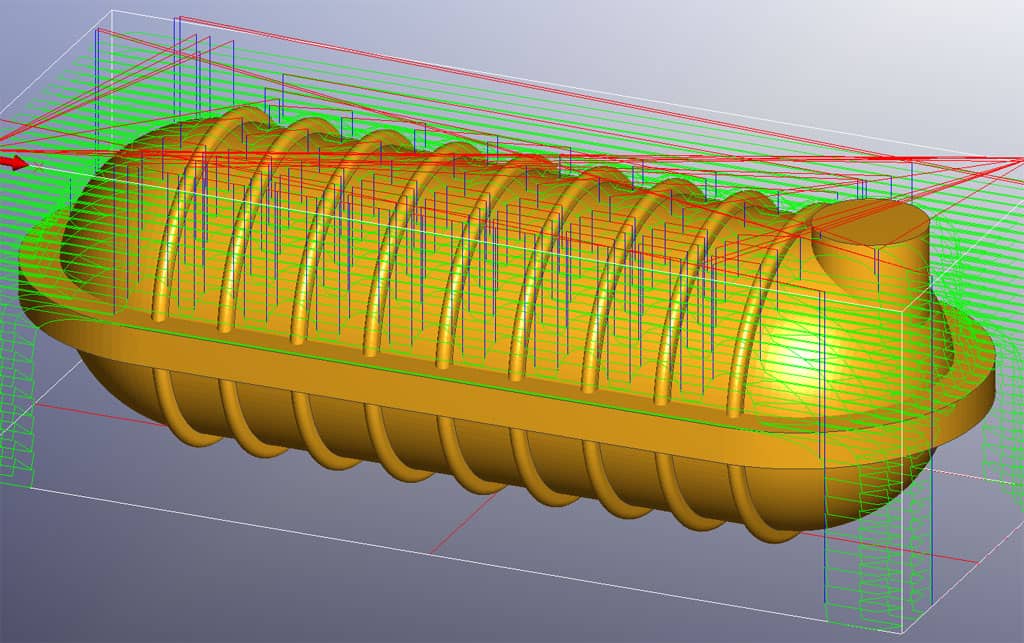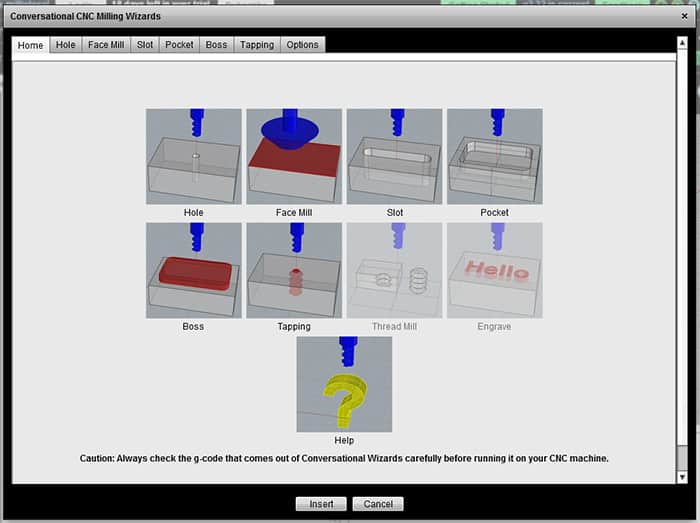The process of programming CNC Parts involves transitioning from a Design to a G-Code Part Program.
1
Decide What Programming Tools to Use
Deliverable: Choose CAM, Conversational CNC, or Hand Written G-Code
G-Code programs can be created with CAM Software, Conversational CNC, or by hand writing the g-code. Deciding which method to use is largely a function of the capabilities of the tools that are on hand together with the complexity of the program to be created.
In general CAM has the most power to deal with complex part programs. Conversational CNC is good for dealing with parts and features of parts that are similar to what would be done easily on a manual (non-CNC) machine. Hand written g-code is most often used as an adjunct to the other two when some special behavior is needed or when the parts are relatively simple.
Hand written G-Code is most commonly found on lathe programs, which tend to be simpler and more easily hand written than mill programs.
Feeds and Speeds
No matter which method you choose to use for your CNC Programming, you will need to be able to determine the proper Feeds and Speeds. Most CAM and Conversational Software will ask you for this information, and of course you'll also need it for hand coded g-code.

As someone just starting out, you need a shortcut for Feeds and Speeds. Get yourself a Feeds and Speeds Calculator like our G-Wizard. It'll will tremendously simplify your life as well as making for far better results.
2
Program the Part
Deliverable: G-Code for the Part + Setup Sheet
Using our chosen programming approach, we will create a g-code part program and update our Setup Sheet to match that part program.
Let's consider each style below:
A
Program Using CAM Software▶
Deliverable: G-Code Part Program Posted from CAM Software
Using MeshCAM to create a G-Code Part Program...
Drilldown on the link to see how to go about Programming Using CAM Software.
B
Program Using Conversational CNC▶
Deliverable: G-Code Part Program Generated by Conversational CNC Software
Conversational CNC Menu for Milling Operations...
Drilldown on the link to see how to go about Programming Using Conversational CNC.
C
Hand Write the G-Code Program ▶
Deliverable: Hand Written G-Code Part Program
Drilldown on the link to see our Free Tutorial on Hand Writing G-Code Programs.
One of the first things you'll learn in the tutorial is how to run a CNC Machine like a Manual Machine. If you already know manual machining on a mill or lathe, you can be doing exactly the same kinds of things quickly on a CNC too. That's one way to get productive a lot sooner.
BTW, there are excellent tools available to help make hand programming gcode much easier. These tools are called G-Code Editors, Simulators, and Viewers.
Our very own G-Wizard Editor is a great example of this type of tool.
3
Finish Up the Setup Sheet▶
Deliverable: Finished Setup Sheet

A simple Setup Sheet...
In this final step, we'll verify our setup sheet matches the part program:
- Are the operations the same and in the same order in both the part program and the setup sheet?
- Do we have a proper tool list that matches the part program in our setup sheet?
- Does the setup sheet capture information about Part Zero and any Work Offsets used in the part program?
- Do we have full information about the workholding in the Setup Sheet and does it match the assumptions of the part program?
- What does the Part Program expect from the operator? Are there optional stops, messages, #variables to initialize, or other things the operator must pay attention to? This should all be documented in the Setup Sheet for the operator to refer to.
Some CAM software has the ability to generate a setup sheet as part of the process of posting g-code. This can be very handy to take advantage of, and we'll add any automatically generated setup sheet information to our Excel spreadsheet.
Resources
For some good articles on Setup Sheets, try the following:
- The Art of the Setup Sheet: A good introduction into how to create great Setup Sheets. Includes a simple Excel template for a Setup Sheet.
- Results of Setup Sheet Survey: We surveyed CNCCookbook readers about Setup Sheets. This article discusses what they had to say.
- Shop Productivity Survey: In this article we learn that CNCCookbook readers felt better Setup Sheets were the #1 thing their shop could do to improve productivity. Setup Sheets are important!
Be the first to know about updates at CNC Cookbook
Join our newsletter to get updates on what's next at CNC Cookbook.

